We are talking to Viktor Mykyta, Head of the Zakarpattia Oblast Military Administration, about the challenges and prospects facing the region in the second year of full-scale war. During the first one, the oblast became a deep hinterland and haven for residents and businesses who had to flee from their home towns and villages. Now there are much fewer IDPs, while small and medium-sized businesses that relocated en masse in 2022 are gradually coming back home. During this time, Zakarpattia has seen both positive and negative developments (mostly in the economy): overpopulation has exacerbated long-standing local problems with roads, schools and kindergartens, garbage and cemeteries — this was particularly noticeable in the cities where population had grown by 20 percent. Meanwhile, the relocated business giants have stirred up the mountainous region with the idea of installing windmills in the mountains and building mini HPPs on rivers.
THE OBLAST’S POPULATION GREW BY ONE THIRD BECAUSE OF IDPS
- Let’s start with the most important thing: Zakarpattia has become a deep hinterland since February 2022 and thus a refuge for hundreds of thousands of IDPs. In the first months of the great war, we accommodated more than half a million IDPs, and kindergartens and schools could not operate because of all the people living there. Obviously, the number of IDPs is much smaller now. How many people remain in Zakarpattia?
- 141 thousand people are officially registered as IDPs. According to mobile phone operators who record phone numbers registered outside Zakarpattia, the total number is 445 thousand. However, most of these 445 thousand are tourists. Indeed, a lot of people came over from other regions of Ukraine this year for a short vacation, because we have no curfew, while traveling abroad is virtually impossible. Even those hotels that have been idle for years are packed. During the off-peak season, the steady number of internally displaced persons is about 300,000.
- That is, in fact, plus one third of the population? (Until 2022, a little over a million people lived in Zakarpattia — T.K.).
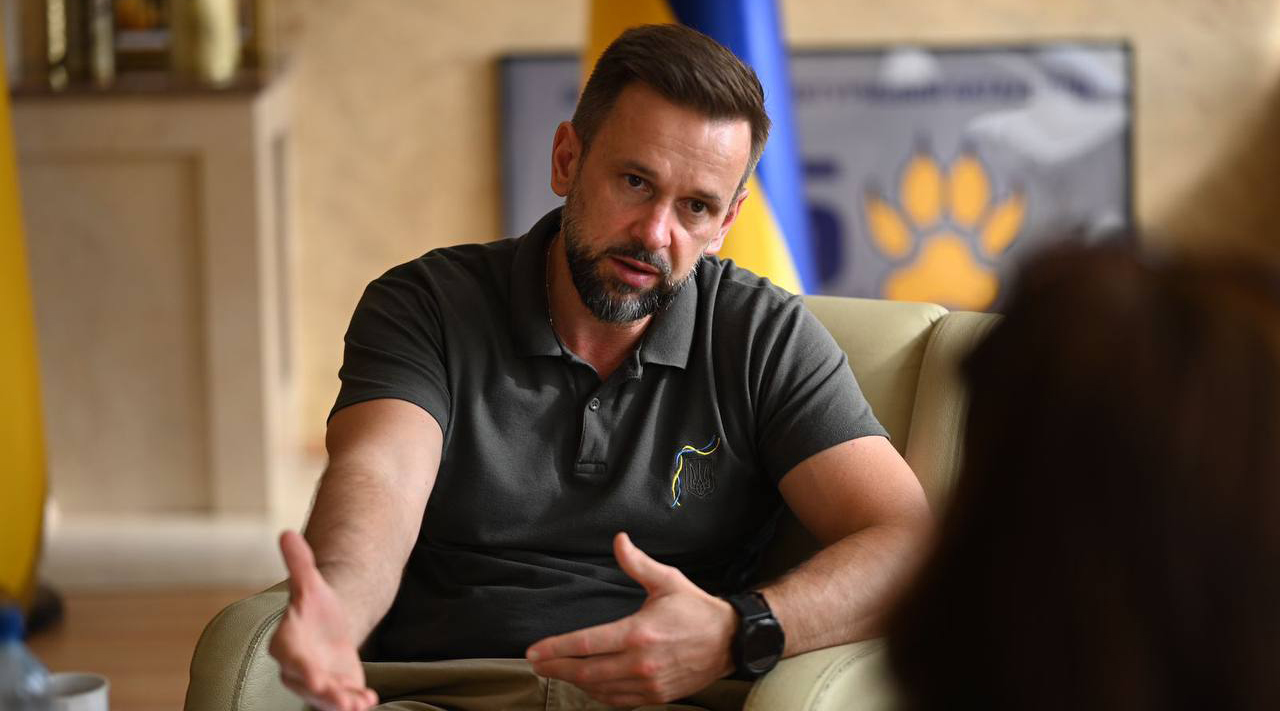
- Yes, there are a third more people in Zakarpattia because of displaced persons.
IN UZHHOROD, THERE ARE 40 TO 45 CHILDREN IN EACH CLASSROOM, THIS IS AN IMPOSSIBLE SITUATION
- 300 thousand is not such a big number. Why do people come back home from Zakarpattia or, for example, to Kyiv, where housing is cheaper and there are more jobs?
- First, distance and mentality have their impact on people who want to be closer to home. Second, it is the cost of rent, which instantly doubled in Zakarpattia right after the war began, while the level of local salaries remained the same.
- Where are the most people concentrated now?
- The largest number of IDPs is in Uzhhorod. In the Zakarpattia Oblast’s center, there are up to 35,000 registered IDPs and the same number of unregistered IDPs, which is about 70,000 people in total. This is the lion’s share of internally displaced persons in the oblast, and, in fact, more than half of Uzhhorod’s population (before the war, the oblast center accommodated more than 100,000 people — T.K.). Many IDPs stay in Mukachevo and Khust, and a significant number of them — in the sanatorium Poliana community.
- Do you feel that cities are overcrowded?
- In Uzhhorod — very much so. There are traffic jams, overcrowded schools and kindergartens (40–45 children per classroom), there are also problems with water, garbage, and the cemetery. On the whole, the situation with schools is intolerable. We need quick solutions.
- What kind of solutions? And how quick can they be — I haven’t heard of any new kindergartens or schools appearing in Uzhhorod in the past eighteen months or in the years before?
- First of all, the flow of people must be redirected from Uzhhorod now. Two giant factories are currently being built close to the oblast center: one in Perechyn for 1.5 thousand employees and the other, for 3 thousand, — in Batovo. This acts like a magnet for the population, and it is important for us today to move the people who will work there away from Uzhhorod and to lighten the city’s load by redirecting the flow of displaced persons, so that they would live where they work. At the same time, we need to create the appropriate infrastructure in Uzhhorod, so that these people, who will earn UAH 20,000 or more, could spend their money on services and entertainment here.
EXACERBATION OF “ETERNAL” PROBLEMS WITH WATER AND GARBAGE
- Water and garbage have always been “eternal” problems for Uzhhorod. Two years ago, it was said that the landfill in Uzhhorod, where the community’s garbage is taken, was 99.9% full. Excuse me for “trolling”, but haven’t the last eighteen months shown that there is still space left, if one looks hard enough?
- Yes, the situation with garbage has presented a long-standing problem in Zakarpattia, and it has become even more complicated now. We don’t have a waste management plant, and investors don’t understand how it is possible for them to work here. They don’t understand whether the raw material base would be sufficient or how the operation will be regulated by law. In the current situation, we will have to build this plant ourselves using certain budget revenues from the relocation. Uzhhorod will be the first on the list. We are designing respective projects and will apply for funding from EU grant projects. We are doing this groundwork on the basis of our Regional Development Agency (Zakarpattia RDA). We’ve been waiting for investors for 30 years now, and it may last another 30 years. We’ll have to do it ourselves.
- As for schools, this is also not an issue of recent years, because classrooms had been overcrowded even before the war in Uzhhorod… Is anybody dealing with this?
- I don’t see anyone among the local authorities dealing with this matter either in Uzhhorod or any other city. And I don’t see any strategy whatsoever if they are going to address this in the coming years. Although I think that this would be appreciated by the parents of a child who is enrolled fortieth or forty-fifth in the class.
Building new blocks of high-rise buildings without schools or kindergartens was all that has been done in Uzhhorod in recent years, because there was no master plan and because building a school is unprofitable. The Bozdosh neighbourhood in Uzhhorod is a monument to senseless urban planning, although the situation can be fixed.
In general, the question is also for the residents of Uzhhorod — how willing they are to lighten the city’s load, specifically the roads. People here would drive to work even 500 meters from home. OMA employees would drive 5 minutes to get to work, although it takes half an hour on foot or 10 minutes by bike. But no, they would circle around the administration building in their cars during the morning rush hour, trying to find where to park, then leave their cars in the public green spaces, but would still use their cars anyway.
- To summarize: can the issue of overpopulation give a final push to Uzhhorod to deal with its urgent problems?
- This push has already been made, because these problems have become unbearable by now.
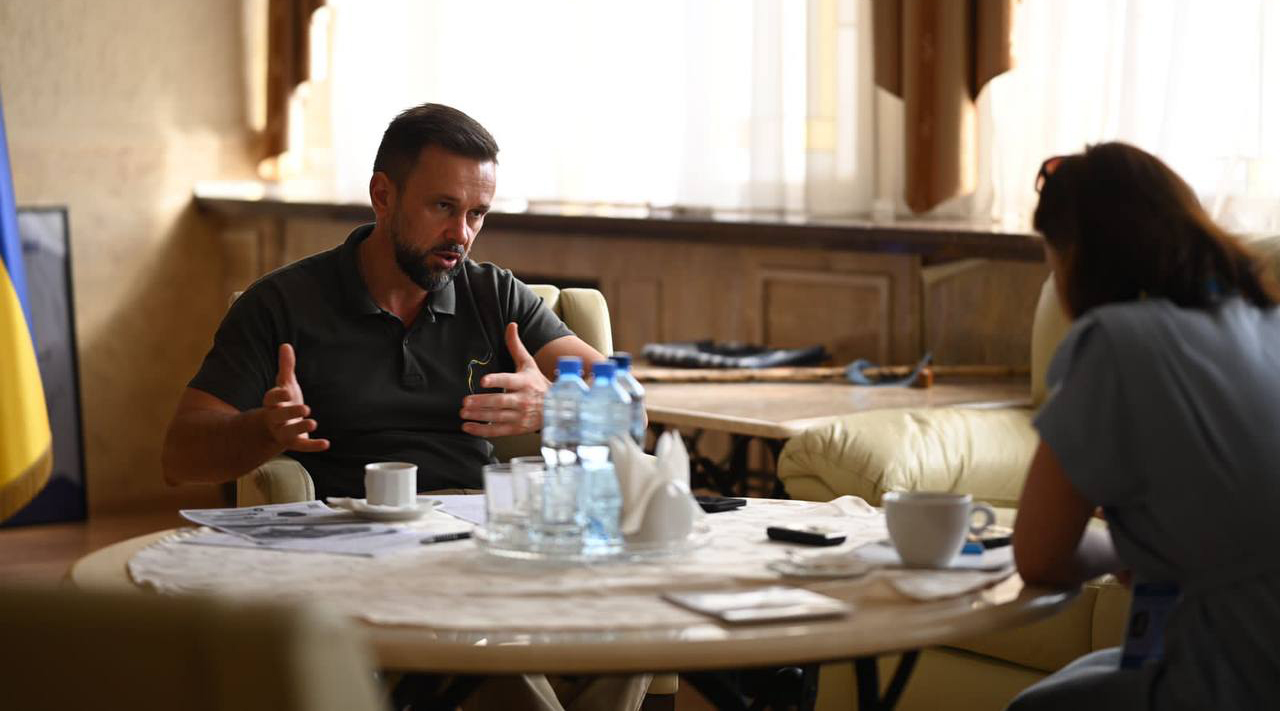
THE COST OF RENT IS DETERMINED BY THE MARKET AND CANNOT BE REGULATED
- Residents of Zakarpattia are often accused of pushing up the cost of rent in the region, which, along with that in Lviv, is currently among the highest in the country — people say, how can you do it during the war, you are marauding? Do you think there is any way to regulate this, because we remember that at the beginning of the war and during the first wave of refugees, the OMA had a hotline for people to call if they were being extorted for, let’s say, 5,000 hryvnias per night?
- If we’re talking about European values, then the answer is no — the market forms itself, and is formed through demand. Respective demand creates a deficit, and thus the price goes up.
- In other words, Uzhhorod has now accumulated, so to speak, the country’s “most well-to-do” IDPs who can afford to rent housing at such prices?
- This portion of the population that rents housing at such prices and shapes the market can hardly be called IDPs. They are people with high income who merely changed their place of residence. This stimulated response from Zakarpattia’s housing market that never had clients with such income before. Can we regulate its prices now? No. Initially, when a large wave of IDPs came and people were in danger of being homeless with no roof above their heads, we were able to respond to complaints about overpriced accommodation or overnight stays. It made common sense. Today it is a market.
- Could it be “calmed down”? It is paradoxical that renting an apartment in Uzhhorod is twice as expensive as in the capital, while salaries are many times lower.
- This is war that creates such paradoxes. By the way, this also causes numerous problems for the residents of Zakarpattia, although the locals get accused of inflating the cost of rent unreasonably. Somewhere in my mind, I thought that this was good for the locals — if, say, your house cost 20 thousand dollars before the war, now its price is 40 thousand dollars or more. But, as a colleague of my once said, I have nowhere to live, and where I could afford a house for 20 thousand before, I can’t afford it for 40 thousand now, because my salary hasn’t changed. The oblast currently needs to bring salaries up to the market level — capitalization has taken place, and people’s incomes must be raised now.
THE ERA OF SOCIAL SHELTERS IN SCHOOLS AND KINDERGARTENS IS OVER
- Given the outflow of IDPs, is the era of social shelters at communal and social infrastructure facilities in Zakarpattia over?
- In fact, yes. We spent UAH50 million on setting up about 7,000 sites for long-term stay of IDPs. It’s a room with a bathroom and shared kitchen. Zakarpattia has 103 such shelters — UNDP, IOM, and other European partners have joined in. 27 shelters were set up with funds from the oblast budget. This means that social shelters are no longer needed in kindergartens, colleges, schools, etc., and we don’t have them in Zakarpattia now. Until recently, a certain category of people resided there who would not work but rather live on the aid from the state or international partners.This has been causing social tensions in the communities.
- Are IDPs in the oblast encouraged to integrate into the community — find a job, participate in social life?
- We have many organizations and projects that encourage IDPs to work. From schools, kindergartens or hospitals in local communities to relocated businesses. My personal opinion is that unless your capacity is limited, for example, you are a person with a disability, a retiree, a mother of large family or a mother with young children without a husband, and you don’t want to work while living in the hinterland or in Ukraine in general, you have nothing to do in this country.Because unless you are fighting out on the front lines, you have to strengthen the economic front.That’s why there are almost no shelters left in Zakarpattia where free meals are offered — I think it’s right; it encourages IDPs to integrate into social environment.
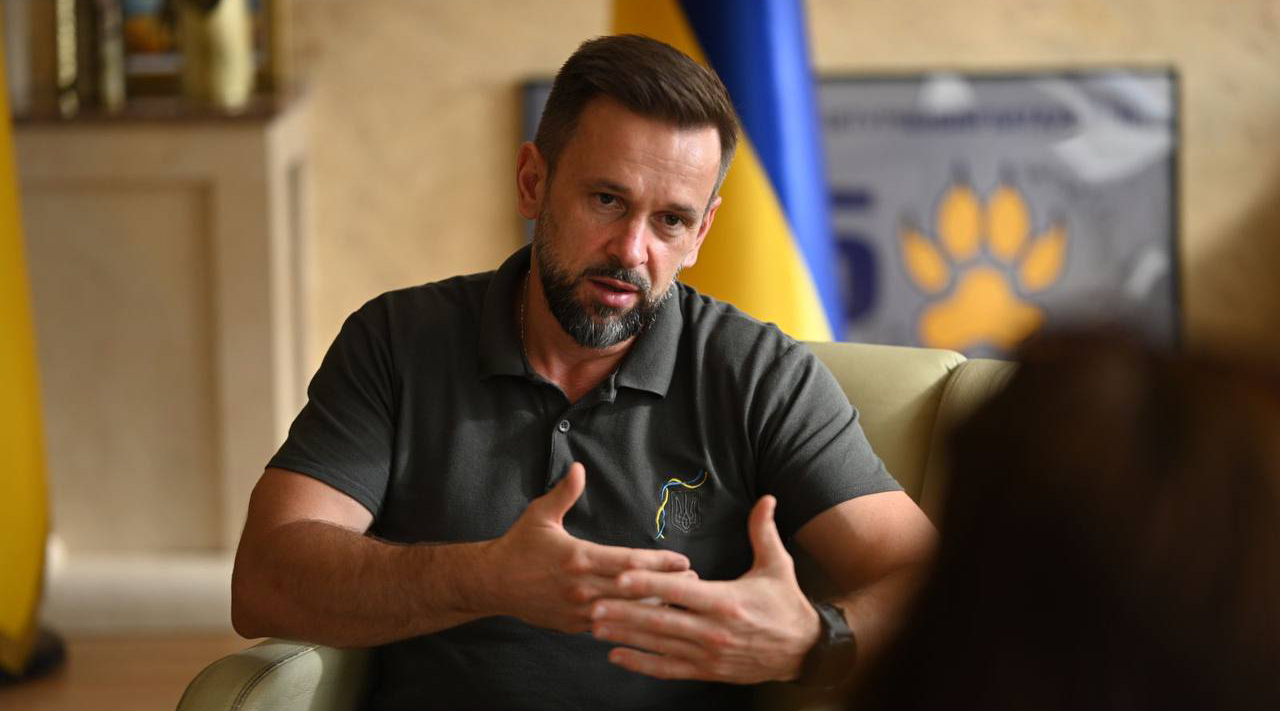
THE MOST SUCCESSFUL RELOCATION CASES
- About relocation: in your opinion, which are the five most successful relocation cases in Zakarpattia and why?
- The first and most demonstrative one is Ajax, a manufacturer of security systems. The second is Fuhrländer Windtechnology, which will build a plant in Perechyn to manufacture wind turbines for windmills. This is a company from Kramatorsk, and its specialists will be paid 45 thousand hryvnias. Centravis in Uzhhorod is a plant relocated from Nikopol, with a unique technology that BMW buys only from them. The Batovo relocation is an MDF plant; a new company was registered there, but it is actually a business from Korosten. Meanwhile, Zibrano is a modular house project from Bucha. It now appears in almost all of our oblast projects because they build housing at the lowest prices: $500 per square meter with furnishings, while in Zakarpattia, such housing is put on the market at $1,100 per square meter or higher.
- A vexing question is whether all these relocated factories and companies have enough workers.After all, the ongoing recruitment campaigns conducted by the Zakarpattia recruitment centers (let’s call it that way, rather than “raids”, as some people on Facebook do) add up to the problems facing businesses: first, men avoid work, and second, you hire an employee, spend resources to train him, but a month later he gets recruited into the army, and there’s a vacancy in production again…
- Indeed, this problem is felt in the oblast, and we are currently compiling a list of specialists with salaries above UAH16-20 thousand who will be exempted from military service.We will forward the taxes paid on these salaries to support the military, which will benefit both the army and the economy.
NO ONE IS GOING TO KILL WOODWORKING IN ZAKARPATTIA
- Let’s move from the advantages of relocation to the problems associated with it. I am referring to two cases: Perechyn’s windmills and Batovo. In Batovo, in particular, you announced the construction of an industrial park where a woodworking production facility with 3,000 jobs will be launched. Local woodworkers are timidly protesting, saying that by letting this giant in the oblast, the authorities will finish off those entrepreneurs who have so far survived COVID and war. Tell us why and for what reason, by accepting this relocation, you are going to finish off local businesses — or is it not the case?
- What about woodworking in general? This is a mega corrupt scheme, a super successful business that owns sawmills, cuts timber, and successfully competes in European markets, while officially paying its employees the minimum wage of UAH6,500. Of course, when you pay cash-in-hand salary, you may compete with anyone, because Europeans cannot afford it.
Should this “local business” be protected from relocated competitors?Probably not. Let me explain why. The MDF board to be produced in Batovo is made from shave, wood chips, and sawdust. That is, a tree gets cut down, its branches are trimmed, the top and the trunk are used for merchantable wood, while the waste will be processed into MDF at this factory. They do not compete with Zakarpattia woodworkers, they will collect their waste and process it, and maybe even pay for it. In fact, there are no problems here.
We fought for this project for four months, it could have been located in Lviv. Of course, if this factory were located somewhere in Mokhnate (a village in the Lviv Oblast — T.K.) and operated there, life would be easier for Zakarpattia woodworkers (speaks sarcastically — T.K.). But we put all our efforts to keep it here, and it will never “suppress” local business in any way.
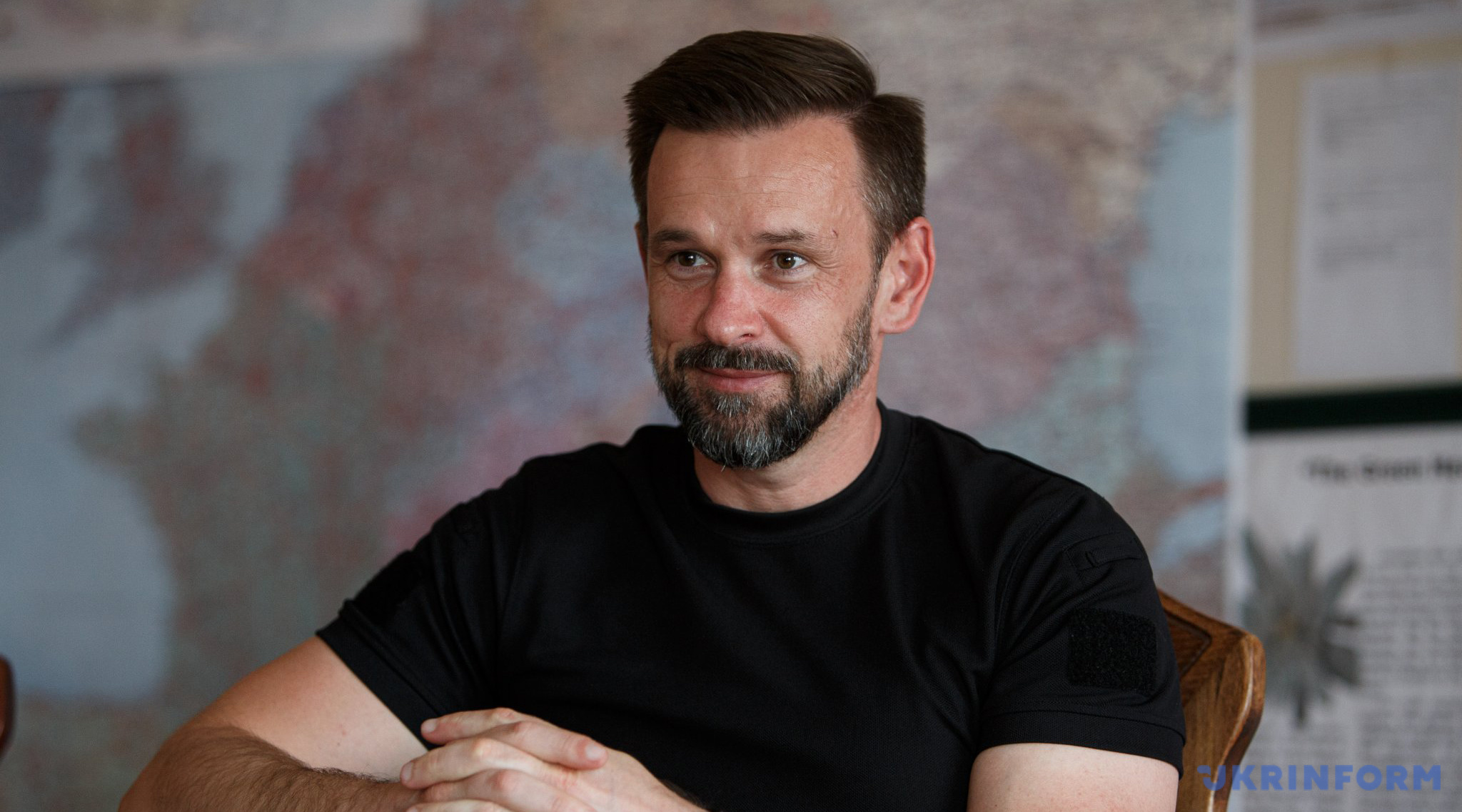
IS THE ERA OF WINDMILLS COMING TO ZAKARPATTIA?
- Let’s discuss the windmills and the Kramatorsk plant that will manufacture turbines for them in Perechyn. This must have been the only case of relocation to Zakarpattia, where some people in the local community were against accommodating a business that was fleeing the war.Nevertheless, the factory would be there, and construction is underway. However, this raises many questions: if a windmill turbine plant is being built in Zakarpattia, then, obviously, these windmills would be put across the oblast, in the mountains and valleys. We see now, that despite orders from the State Environmental Inspectorate, sites are now being concreted in the Runa mountain valley near Perechyn to install these wind turbines. Does it mean that the era of windmills has arrived?
- Let’s start by saying that this plant is a very powerful business that will raise the Perechyn Community to a level that is probably higher than that of Uzhhorod in terms of infrastructure, kindergartens, schools, high salaries, and so on.Make our oblast lose this chance and deny relocation to the Kramatorsk plant? Well, I won’t even comment on that. Next: will windmills be built? Decentralization is underway in this country, it is about the communities’ legal personality, and we see many examples like Svydovets, where the community maintained its own position (despite the protests of environmentalists, local communities have greenlit the construction of an infamous giant resort in Svydovets — T.K.). As for the windmills: the community must gather for public hearings and decide how they want to live and what they want to do. If they decide in Turi Remety (it is in this community that preparations are being made for installation of the first windmills in Zakarpattia — T.K.) that these windmills will fund their budget and offer the opportunity for development, they will adopt a decision and allow windmills in their mountain valleys.
The thing is that, until now, an investor who wanted to build windmills would pay the community a land use tax only on the area of the windmill site, which is 10 square meters. This is peanuts.
- This is how it worked in Borzhava where the Turks wanted to install windmills. Is it any different now?
- It is indeed, the business would now have to give the community 3-5 percent of its profit from electricity sales. This is about UAH70-80 million of budget revenues. The community would then have to decide whether they need it or not.
- In other words, the business that puts windmills in mountain meadows has now chosen a different scheme and is willing to share a portion of its profit with the community for, roughly speaking, using their land and the wind that was converted into electricity here and sold to the state?
- This is how it works now. These are our terms. We emphasized this and said that we were against it if you offered the community just one road, one kindergarten and a tax on ten square meters of land for each windmill. This will not work, because the budget must be funded systematically. But ultimately, the community must decide itself.
VILLAGES NEED WINDMILLS AND MINI HPPS FOR ENERGY INDEPENDENCE
- Windmills are also about energy decentralization. Russia isn’t going anywhere; they will continue to shell our power grid — we see that they are building factories to produce drones that will attack our power substations this fall. Okay, their last year’s attacks were not too successful, but we have another winter ahead of us. Communities need to think about energy independence now.
- But wait: in fact, during winter blackouts, the electricity would be cut off for 20 hours in the villages where mini HPPs operate just like in any other villages. This means that the availability of a mini HPP would not ensure any energy independence; this power would not reach the village — it’s just that the power would not be cut off on the line where the mini HPP is.
- No, this is about this mini HPP generating one megawatt, which wouldn’t support the community, but rather, to some extent, — the inhabited locality where it is situated.The line wouldn’t be cut off to support an exchange and deliver this one megawatt generated by a single mini HPP to the unified power grid. If four mini HPPs were installed in this village, the community would be completely autonomous. 4–5 megawatts would be enough for a village.
- Well, but it is also a fact that four mini HPPs would kill the river in the village where they are installed. In other words, the community either has power, energy independence and no river, or has the river, but sits without power during blackouts?
- Let me explain here.On the contrary, it is the installation of mini HPPs that should be integrated into an overall water conservation strategy. Water barrier structures are installed to store water during spring floods and to dose its supply in summer. We see that rivers dry up in summer not only in villages — look at the Uzh in July and August, it is without water. It shouldn’t be this way, a dam must be built to accumulate a certain pool of water during spring floods, to dose and maintain the water level in the river afterwards.This is what all civilized countries do. Another question is when to install mini-turbines on these dams and generate power on them. It works for Switzerland or Austria.
- One more question about the windmills: could a similar project to build a wind farm on the Borzhava Ridge be resumed due to the fact that this “window of opportunity” has opened?
- The Turkish windmills in Borzhava were greenlit by the then Oblast State Administration headed by Hennadii Moskal. The community could have said “no,” and nothing would have happened then, but they didn’t object. Our task now is to clarify things to the community so that they wouldn’t feel deceived. The main condition is that the community receives funds from the profits of the company that operates in their area, and the second one is that the project must undergo an environmental impact assessment and public hearings.Right now, in the case of Runa, the developer is being accused of destroying the blueberry bushes. They must reimburse the costs: if they destroy the blueberry bushes by building a road to the windmill, they must pay for it. There should be a substantive agreement between the community and the business. As far as I know, such an agreement exists with Wind Parks of Ukraine.
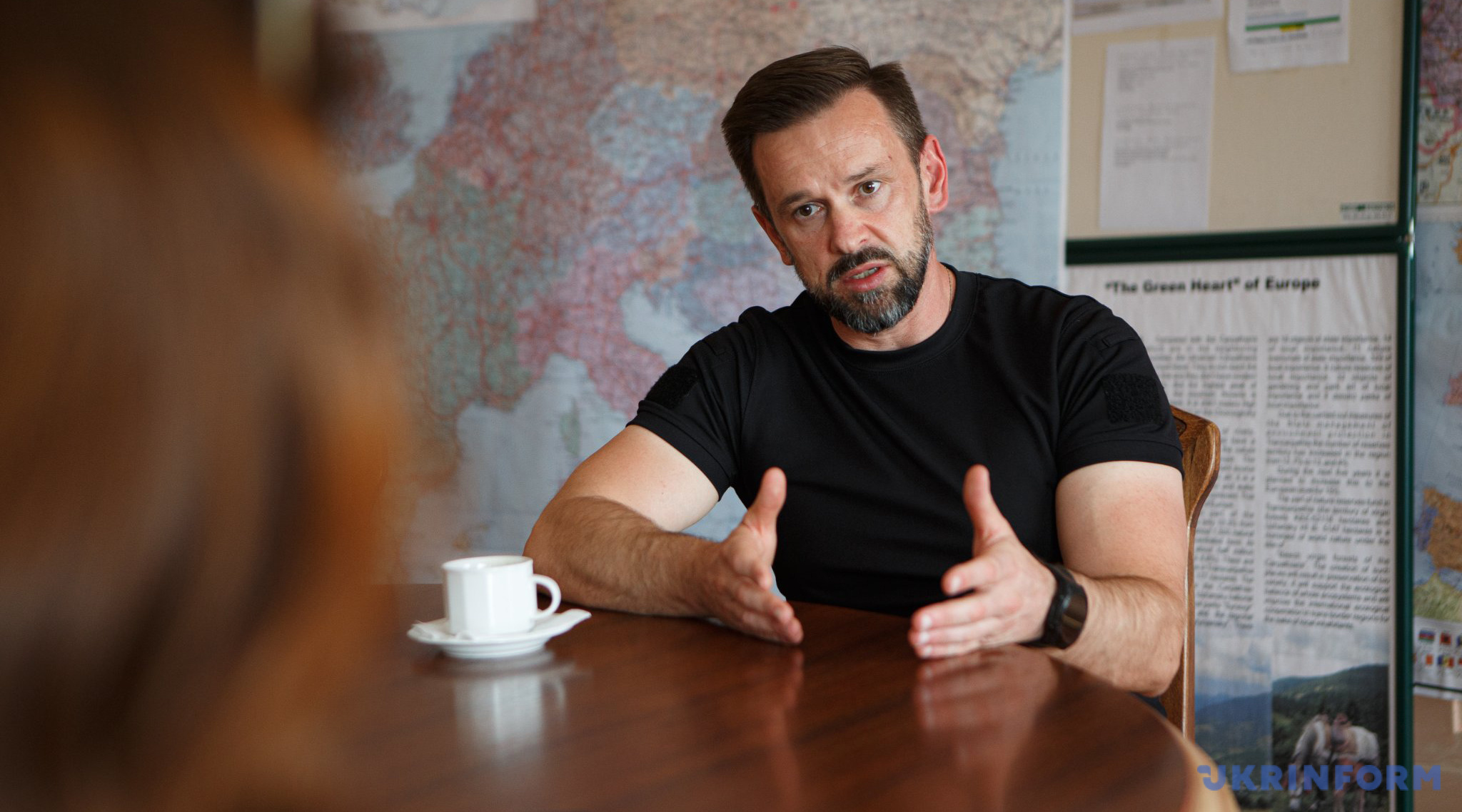
THERE WILL BE NO CHOVEN REHABILITATION CENTER, IT WAS NOT FUNDED
- A question about the military and Zakarpattia: last year, the region was proposed as a base for servicemen’s rehabilitation during and after the war. The rehabilitation center project at the Choven sanatorium was presented in Lugano, and you said that the construction would start in 2023, but right now we see that there is no center. What happened?
- Indeed, Choven was to be funded from the state budget, but the funds for this project were not forthcoming. We can create a hundred such projects here, but none of them will happen if there is no funding. There is nothing to talk about Choven now, we’ve moved on, there will be no Choven. Today, we have prepared a more down-to-earth project in Uzhhorod, which is based around old buildings of the city hospital, and we thought that it could be partially funded by UNDP or other international organizations, but it will take two years to compile documentation and approve funding. We don’t have these two years. Therefore, today we view the implementation of this project differently: there are seven floors in that building, and we expect each floor to be taken and equipped by an EU country from among the region’s partners.
- This is the third or fourth project of a rehabilitation center for the servicemen…
- And we hope that it’s the final one. We are currently drafting design and estimate documentation for it, funded with UAH10 million from the oblast budget, and the design stage is underway. We are aware that no money will come for the center from the state budget, because there is no money. This is why we pin our hopes on the European budget. At the same time, we are negotiating with various countries that will help build the rehabilitation center.
- Will it be done within a year? Two years?
- We would like to reach the level where medical equipment will be brought in by the end of 2024.
- Is the regional rehabilitation headquarters functioning now?
- Yes, hundreds of servicemen undergo rehabilitation, but it’s psychoemotional, is more about rest than professional treatment.Servicemen stay and have meals in sanatoriums free of charge. However, assistance to our soldiers must be delivered at a different level.
IN BRUSSELS, WE TELL MEPS THAT “HUNGARIAN ISSUE” DOES NOT EXIST IN ZAKARPATTIA
- You’ve been traveling a lot on business to Brussels recently. Are there any practical benefits of these visits to the European Parliament?
- This is an audition that we’re taking today as a region. Other oblasts, such as Lviv or Kharkiv, have already passed these auditions long ago, and, in the EU, they are well aware of Lviv, Frankivsk, Kharkiv… Now they are finding out about us, we put our brochures on their desks and hear, “It’s Switzerland!” We say, “Help us make it a real Switzerland!” We should have made ourselves known 20 years ago. In Brussels, we meet colleagues from other Ukrainian regions who have been traveling there and communicating with MEPs for years. It’s only now that we’re showing ourselves as a region with legal personality.
We can still hear at high EU levels: Ukraine is corrupt, you will steal money if we give it to you. We desperately need to destroy this negative image now, it’s killing us! I held talks with entrepreneurs in Brussels, and now we are inviting a solar panel manufacturer to Zakarpattia — it’s a powerful company with a yearly turnover of $400 million.
Sometimes my colleagues ask me why you are clinging to them, we have companies with larger capital here. I point out that we need to attract European businesses and destroy any stereotypes they may have about corruption. Let them in, let them launch production in three months, make money, and then tell their friends that there is no corruption here.
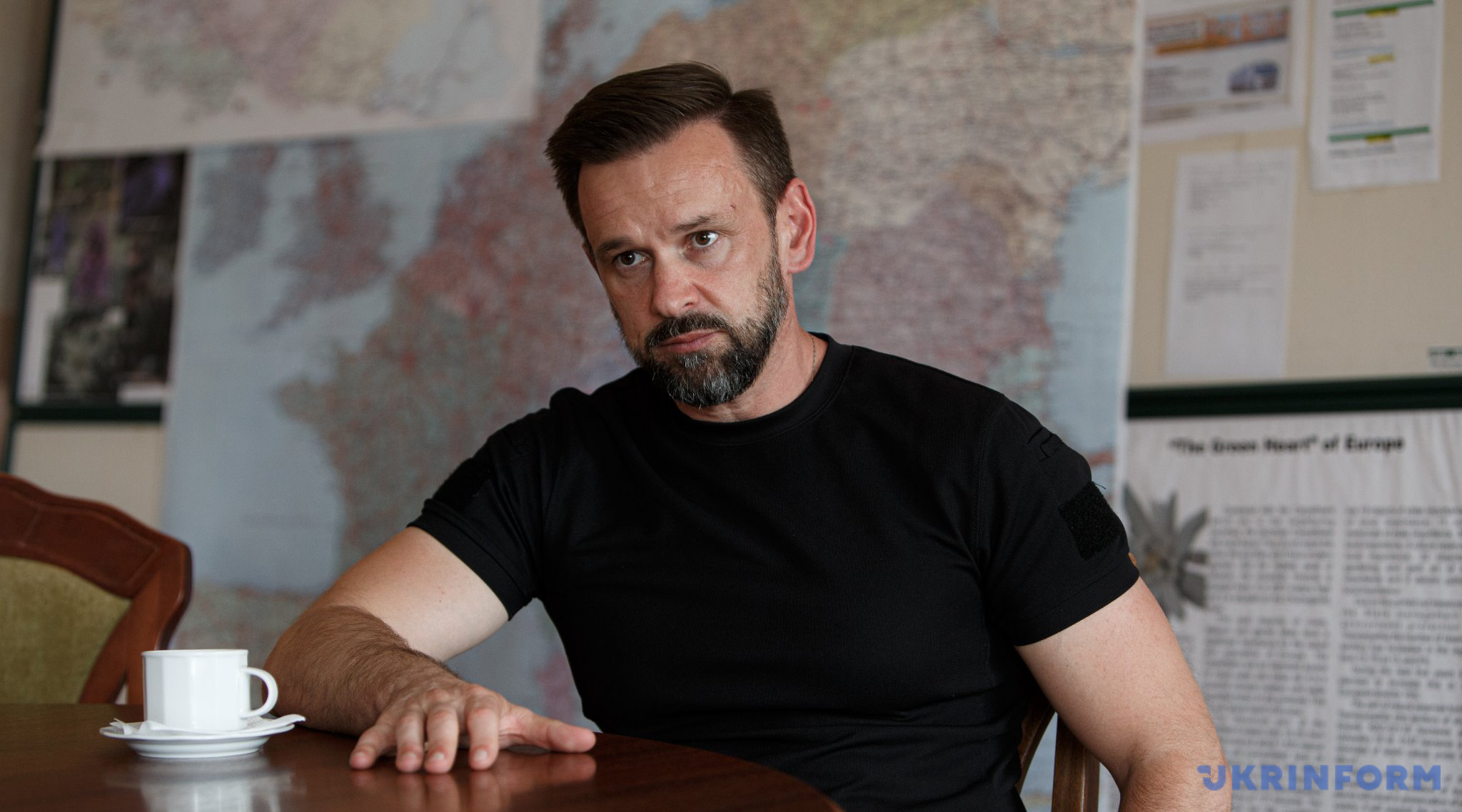
- You want the European “buzz marketing” campaign to work?
- Exactly. We want them to have a look at this successful experience and tell others that Ukraine has industrial parks, no income taxes, only PIT, and that the average salary here is much lower than in Europe, which is hands-down beneficial to Europeans. We really want to launch this buzz marketing, because it works very well in business — once the first one is in, others will follow. We are in the process of drafting a project to showcase Zakarpattia and introduce European businesses to the territorial communities’ chairpersons.
- What else is discussed in Brussels besides business projects?
- The same “Hungarian issue” — we finally have the opportunity to tell MEPs that there is no such “issue” and that no one is oppressing the Hungarian minority in Zakarpattia. Until now, they’ve only heard the Hungarian politicians’ version. MEPs now realize that the situation is different from what Hungarians are saying, that the national minority is not persecuted, that this is a far-fetched story and false rhetoric.
It also means participation in EU grant projects. Here we open the EU doors ourselves, and we get accepted. This dispels the myth, created by Russian propaganda, of our corruption and lack of legal personality. We are a full-fledged democratic country that is actually in the EU already.
– Is this cooperation at the level of regions — ours and European — felt anywhere?
- When we are in a critical situation and we tell our colleagues in Austria that we urgently need to take 700 children out of Zaporizhzhia, can you accommodate them? They say, bring them over, we’re taking a thousand. If necessary, they also supply ambulances and fire trucks, and we forward them to the areas where this equipment is needed. In other words, it is quick support from good friends.
But we would like to develop other operations as well. We’ve been discussing windmills and green hydrogen with Europeans.In the EU, green energy is an industry that enables mega revenues for the state budget. Windmills generate 300% of their power, and there’s nowhere to put it; therefore, they are building hydrogen plants to convert this energy into hydrogen. Hydrogen is the fuel of the future.
We’ve been meeting and receiving advice from our European partners: if we develop green energy, that is, wind, solar, and mini hydroelectric power plants, we will become part of the common European hydrogen production infrastructure. If Zakarpattia is able develop such a network in the next 5–10 years, this would be our road to the future.For Zakarpattia, this means integrating into the EU infrastructure. We are acquiring legal personality for a hundred years to come.
Tetiana Kohutych, Uzhhorod
Photos by the Press Service of the Zakarpattia OMA, Serhii Hudak
